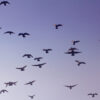Signs of Respiratory Distress in Pigeons: What Every Fancier Must Know
Respiratory health is the engine behind every successful racing pigeon. When your birds can’t breathe freely, they can’t fly with strength, speed, or endurance. But here’s the challenge: early respiratory distress in pigeons often goes unnoticed until it starts affecting flight performance.
As a dedicated fancier, you need to know what to look for before it’s too late. This guide will break down the key symptoms, common causes, and most importantly, the treatment and recovery strategies you need to get your pigeons back in peak condition.
Why Respiratory Health is Critical in Racing Pigeons
The pigeon’s respiratory system is built for high-performance oxygen exchange. With air sacs, efficient lungs, and a lightweight skeletal structure, racing pigeons are natural long-distance flyers.
However, this finely tuned system is also incredibly sensitive to pathogens and environmental irritants. Once inflammation or infection sets in, your pigeons can quickly lose:
-
Endurance
-
Speed
-
Desire to fly
Understanding the early signs of respiratory distress can mean the difference between quick recovery and long-term setbacks—or even permanent damage.
What Causes Respiratory Distress in Pigeons?
Respiratory issues are often triggered by a combination of factors, including:
1. Pathogens
-
Bacteria (e.g. Mycoplasma, Chlamydia psittaci, E. coli)
-
Viruses (e.g. Paramyxovirus, Herpesvirus)
-
Fungi (e.g. Aspergillus fumigatus)
-
Parasites (e.g. air sac mites, trichomonads)
2. Environmental Irritants
-
Dust from bedding or droppings
-
Ammonia buildup from poor ventilation
-
Mold spores in damp lofts
3. Compromised Immunity
When these factors come together, your pigeons become sitting ducks for respiratory infection.
Early Warning Signs of Respiratory Distress in Pigeons
The tricky part about respiratory disease in pigeons is that early signs are subtle. Birds are prey animals by nature, and they hide symptoms to avoid appearing weak.
Here are the key indicators to watch for:
🔹 1. Blocked or Crusty Nostrils
-
Yellow or white discharge from the nares (nostrils)
-
Hardened crusts that obstruct airflow
-
Frequent head shaking or sneezing to clear airways
🔹 2. Gasping or Labored Breathing
-
Breathing with an open beak
-
Tail bobbing with each breath
-
Audible wheezing or clicking sounds
🔹 3. Wet or Inflamed Wattles
-
Darkened, swollen, or wet wattles
-
Indicates chronic inflammation in the sinuses or upper respiratory tract
🔹 4. Eye Discharge or Swelling
-
Watery, foamy, or pus-filled eyes
-
Swollen eyelids
-
Birds rubbing their heads against perches
🔹 5. Reduced Flight Performance
-
Reluctance to leave the loft
-
Flying short distances, then landing
-
Getting out of breath quickly
-
Losing position in races or training flights
🔹 6. Behavioral Changes
-
Standing fluffed up
-
Decreased appetite
-
Isolating from the rest of the flock
If you notice more than one of these signs, it’s time to act fast.
What Happens If You Ignore Respiratory Symptoms?
Left untreated, even mild respiratory issues can spiral into:
-
Chronic respiratory disease (CRD)
-
Permanent lung damage
-
Secondary infections (e.g., canker, E. coli)
-
Loss of competitive ability
-
Contagion within the loft
Eventually, affected pigeons may avoid flying altogether, losing their homing ability and interest in racing.
Don’t wait until symptoms get worse. Early intervention is everything.
Immediate Treatment Plan for Respiratory Distress in Pigeons
Here’s a proven, three-step action plan for tackling respiratory distress quickly and effectively.
Step 1: Administer Respiratory Antibiotics
The first step is to eliminate the bacterial infection causing the inflammation.
Recommended antibiotics (consult an avian vet before dosing):
-
Doxycycline + Tylosin – Targets Mycoplasma and Chlamydia psittaci
-
Enrofloxacin – Broad-spectrum; good for E. coli and secondary infections
-
Spiramycin – Effective in early-stage respiratory infections
-
Amoxicillin/Clavulanic Acid – Strong combination for mixed infections
⏱️ Duration: 5–10 days, depending on the severity
💡 Combine with respiratory support supplements like eucalyptus, thyme, or menthol-based tonics for natural airway clearing.
Step 2: Remove Environmental Irritants
Respiratory recovery can’t happen in a contaminated loft. Take these actions:
-
Improve ventilation: Install vents or fans; open windows without creating drafts.
-
Clean bedding: Use dust-free, absorbent materials like hemp or chopped cardboard.
-
Control ammonia: Clean droppings daily to reduce gas buildup.
-
Eliminate mold and dampness: Dry out walls, perches, and nest boxes. Use anti-fungal sprays if needed.
Bonus tip: Use air-purifying herbs like thyme or eucalyptus in small amounts around the loft.
✅ Step 3: Rest and Isolate Affected Birds
Sick pigeons need rest, hydration, and warmth.
-
Remove them from training/racing schedules.
-
Provide an isolated pen or hospital box.
-
Offer warm water, electrolytes, and easily digestible grains.
-
Use vitamins and probiotics after the antibiotic course to rebuild health.
📍Isolation is key to stopping the spread of infection.
How to Prevent Respiratory Disease in Your Loft
Prevention is more cost-effective and less stressful than treating sick birds. Here’s how to build a loft environment that supports clear breathing and elite performance.
🔁 Rotate Health Protocols
-
Use respiratory tonics monthly
-
Deworm every 2–3 months
-
Treat for lice and mites regularly
🧼 Maintain a Clean Loft
-
Daily droppings removal
-
Weekly bedding change
-
Monthly disinfection (use loft-safe, non-toxic disinfectants)
🌬️ Optimize Air Quality
-
Keep humidity levels low
-
Avoid overcrowding (max 8–10 birds per cubic meter)
-
Use natural light and airflow to keep the loft fresh
🥗 Support the Immune System
-
Use high-quality grain mixes
-
Supplement with vitamins A, C, and E
-
Add garlic, oregano oil, or apple cider vinegar to the water occasionally
Strong birds are less likely to get sick—and recover faster when they do.
How Respiratory Distress Affects Racing Performance
Let’s get practical.
A pigeon with even mild respiratory irritation will:
-
Avoid strenuous flight
-
Lose homing focus
-
Become winded faster
-
Fall behind in training
And once one bird shows signs, it’s likely others in the loft are already affected—even if they seem okay.
That’s why it’s essential to monitor your birds closely during and after races, especially after exposure to strange lofts, training baskets, or competitive events.
Final Thoughts: Breathe Easy, Fly Strong
Respiratory distress in pigeons is more common than most fanciers realize. It creeps in quietly, hiding behind normal behavior until it’s already hurting performance.
But with the right knowledge, you can:
-
Spot symptoms early
-
Act quickly with the right treatment
-
Clean up the loft environment
-
Build a stronger, more resilient team
Your pigeons rely on you to protect their health—and their ability to soar.
Don’t wait for blocked nostrils and labored breathing to ruin a race. Start building respiratory resilience today.


